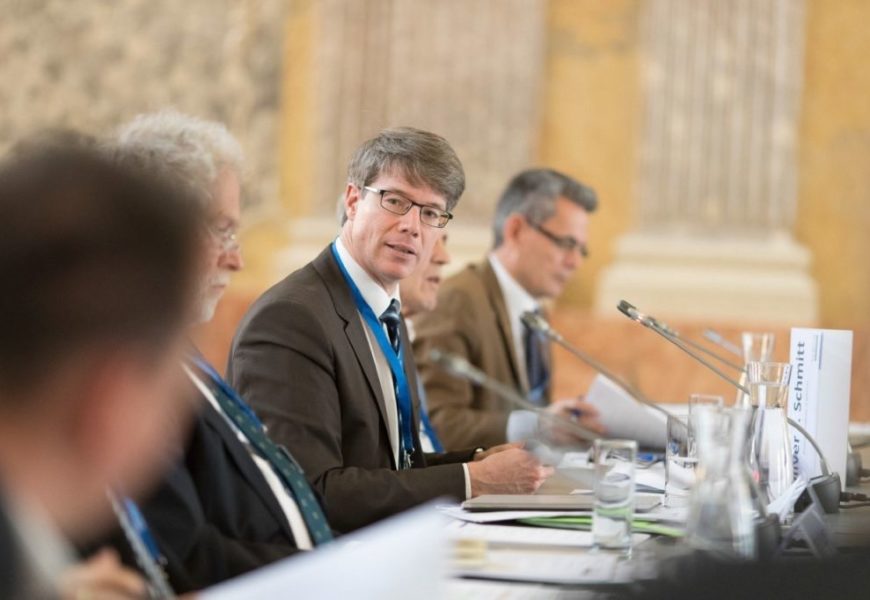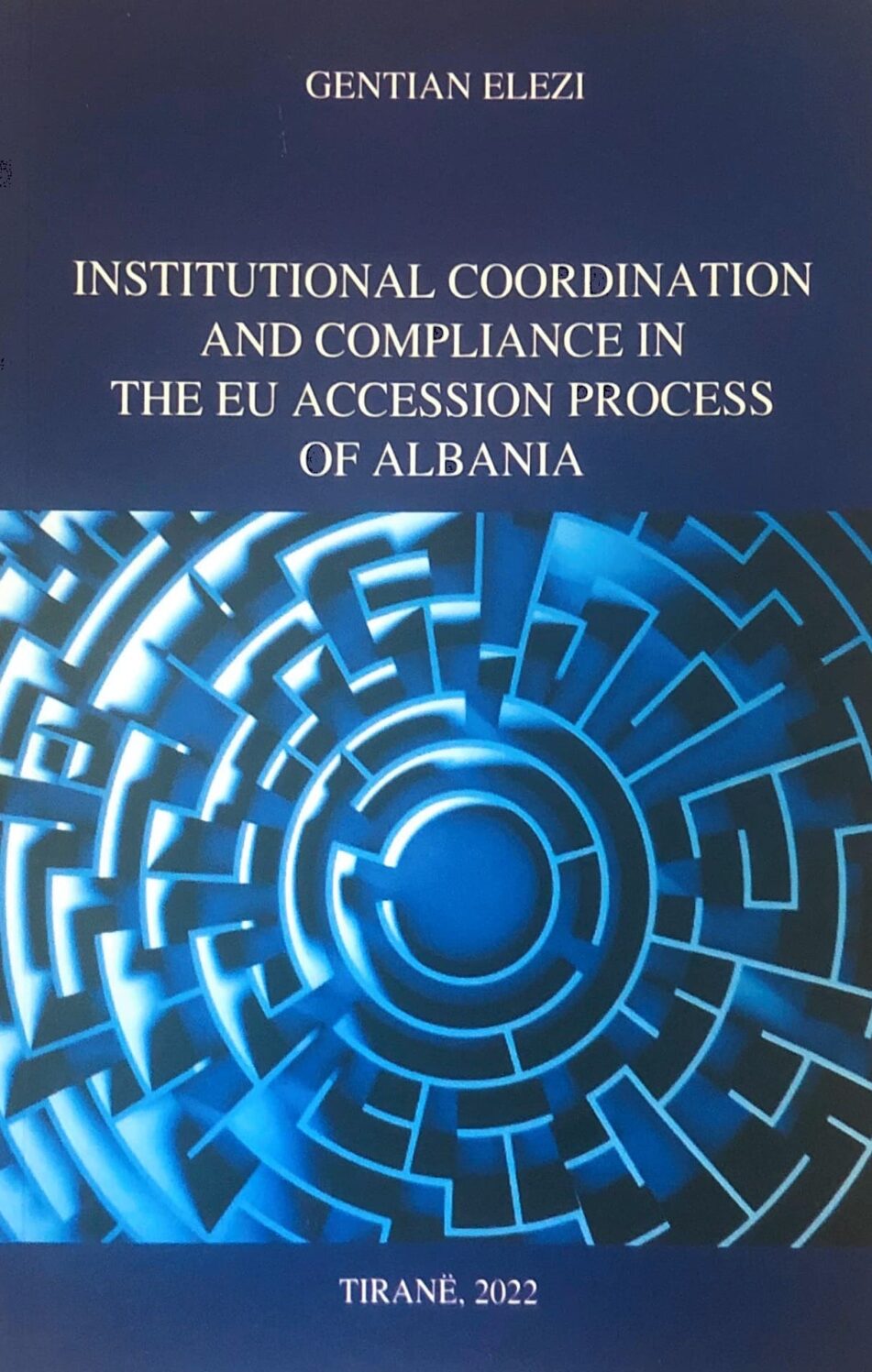Ardian Klosi
Swiss born historian Oliver Jens Schmitt, currently working as a professor of the History of Southeastern Europe in the Vienna University comes thus to the Albanian reader with an impressive, well-researched scholarly work. The book examines the history of Albanian lands in the late medieval period covering sources reporting on places as far as Tivar in the north and Epirus in the south. Schmitt’s work tries to follow the path on neutral scholars who challenge nationalistic historiography such as Sufflay, Jirecek, Ippen, etc. Preparatory work for the book has included archive research as well as a comprehensive literature review of Albanian, Slavic, French and German sources.
Oliver Schmitt was born in Basel in 1973. He started his work on Albanian history as a dissertation tutored by the well known scholar of albanology, Peter Bartl in Munich. His work developed into a 700 page transcript of diverse aspects of life in Albanian territories at the time. The German edition of the book came out in 2001.
Currently the department for which Schmitt is working has in its possession the archive called “Albanien-Bibliothek”, which automatically makes it a center for studies related to Albanian history. The author is researching his new project for a monograph of the Albanian national hero, Gjergj Kastriot – Sk쯤erbeu. He visited Albania last week in order to promote his book in the cities of Tirana and Shkodra. He was interviewed about his books and plans for upcoming ones by his translator Ardian Klosi. In his interview Schmitt reveals interesting information about the work needed to complete his book and tells about plans regarding his future works.

The author claims it took him three years of work, mainly in the state archives in Venice. He started in 1997 with the cursory examination of all published works he could lay his hands on. This took one complete year. He started writing in July 1999. One of the hardest parts, as with every historio-graphical work, was to compile the index.
Asked about the interest he took about such a specific topic, Schmitt recollects a similar interest since his high school times when he read the works of Milan von Sufflay and Konstantin Jirecek. In his first semester in the University of Vienna he attended a seminar by Max Demeter Peyfuss, who had previously researched and published material about the area of Voskopoja and its rich historical account. Another foundation of his work was to study Byzantine history with Johannes Koder, a co-author of a book on medieval southern Arberia. Schmitt was lucky to have unlimited access to the library of Bavaria and other unique sources made available after the publication of the Shkodra statuses in collaboration with Lucia Nadin, Gherardo Ortalli and Pellumb Xhufi.
Scmitt used also many Albanian works such as Luan Malltezi’s 1988 edition of an extensive history of urban centers under the Venetian rule. He looked for material in the archives of Dubrovnik and Kotor. The real factual basis of the book is the 25 volumes of Acta Albaniae Veneta, from the Jesuit father Giuseppe Valentini. The thousands documents and manuscripts had to be classified thematically.
Schmitt argues that such work needs passion. The first book is very crucial. He realized the fact when he started working on his second book on Istanbul and Izmir of the nineteenth century.

Schmitt does not claim that he has extinguished all the material regarding the history of the Venetian rule in Albania. Historical work is always subject to interpretation, criticism and there is always room for elaboration and improvement. New material becomes available with time and more work is needed especially for the period just before the siege of Shkodra in 1479. Other archives also are said to contain important information as the author discovered later with the documents belonging to Gjergj Strazimirovic Balsha (end of 14th century) which he found in Zadar in 2006. While extensive research has been made in the north Italian archives more work is needed in the small parochial sources in the south of the Apennines. Sometimes casual discoveries of documents are the most interesting ones. Schmitt brings the example of finding by chance a document that proved Skenderbej had a house in the Croatian island of Hvar. Other new material becomes available also with archeological discoveries. In this context the work being done in Lezha is very systematic and thus promising.
According to Schmitt it is important that young scholars of history undertake projects of research. He mentions in this context a program of research grants near the University of Vienna which usually employs historians from Kosovo, Albania and Macedonia.
Asked about the novelties that his work on Skenderbej might bring given the vast existing scholarship on the issue, Schmitt reveals that he is trying to go beyond the narrative chronological structure that is overwhelming in the previous work. He is trying to continue his work based on the examination of multiple sources and especially archive materials from Italian and Austrian fonts. The book tries to bring in a new topical analysis of features such as the accompanying group of the hero, the importance of social aspects such as loyalty and treason, the projected image of the leader, etc. It will pose serious questions over the importance of the Lezha Agreement; taken for granted up until now to be the foundation of Skenderbej’s political power. The book will also concentrate on economic issues, the financial transactions and deals made by Skenderbej, the customs policies, the import of war technology form the West, the help received form the papal power and the Venetians in their anti-Ottoman alliance.
Sometimes one can ask very simple yet unanswered questions such as what was the real value of one dukat (Venetian coin) for an ordinary Albanian mountaineer living by animal farming in the highlands. Even if primary data is not available one can get an educated guess by comparative analysis with areas that displayed a similar economic and social composure such as the Dalmatian cost in that period. Data from there show that one shepherd could earn as much as one ducat in his entire work year. Thus if Skenderbej received 1400 dukats to pay his army this meant a considerable assistance. It would cover the annual salary for a lot of his soldiers.
Another interesting topic to explore is the account of Marin Barleti which has proven to be quite reliable as he used narrative models without many exaggeration patterns, relying thus on 15th century Italian renaissance literary tradition. However, he does combine some heroic idealized images from the Epirus epical tradition. All these combined factors shed some light on the popularity that Skenderbej had throughout the Balkans.
Finally Klosi asks an opinion about contemporary Albanian historians and overcoming settled patterns of nationalistic history. It is a very relevant topic in the discussions of academia and its role in perpetuating given models of historical analysis. According to Schmitt, the tradition of nationalistic history in communist scholarship is similar in several countries and by no means unique to Albania.
Contemporary conditions for academic work are not that easy. An important dialogue series is being coordinated by the History Institution of Tirana, the Science and Arts academy in Prishtina, the Balkans commissions of Austria and the University of Vienna, regarding proper historical investigation and scholarship. A preparatory conference preceded the series in Vienna in December of last year where famous foreign scholars of Albanian history such as Nathalie Clayer, Peter Bartl, Noel Malcolm, Conrad Clewing, Bernd Fischer summarized the actual situation of studies and gave a list of topics to be kept under the limelight of upcoming projects. Their contribution was recently made available in Albanian and given to Albanian scholars so that as a second phase they get a chance to respond. A large congress of historians will dwell upon the summary of the results. For that Schmitt expressed his gratitude to the supportive representative of the History Institution of Tirana Marenglen Verli and the Science and Arts academy of Kosova representative Rexhep Ismajli.
Schmitt’s book on Albanian medieval history is available to students of history and all Albanian readers curious to shed some light into one of the least researched and definitely most interesting periods.
“Albania Veneta 1392-1479″ (Alb. Arberia venedike 1392-1479) was translated into Albanian by the well-known scholar, Ardian Klosi










